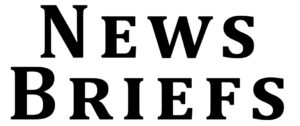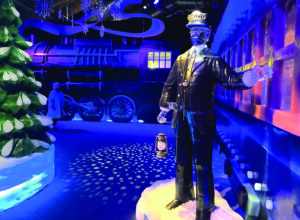
The Falls Church City Manager’s office last week issued a blockbuster updated “Mixed Use Development Fiscal Impact Report” showing that eight completed mixed-use (combined residential and retail) projects that have been built and occupied in the City since The Broadway launched the trend in 2003 collectively have given an enormous boost to the City.
The projects, taken together, generate a net $3.8 million a year to the City, equal to almost nine cents on the real estate tax rate, compared to $571,000 a year that their combined 18.5 acres were generating for the City before.
The net revenue takes into account the projects’ added cost to the City, including to its schools. The gross tax revenues they generate are $10.6 million annually, and the net $3.8 million sum deducts the cost of operational support costs to the City, including the cost of educating the approximately 200 (the estimated range is 174 to 219 as two of the newest projects, 301 West Broad and the Lincoln at Tinner Hill, are not yet fully occupied) students that live in their residences.
The new evaluation also does not include the most recent development, that Target has signed a lease to occupy 26,000 square feet of commercial space on the ground floor of the Lincoln at Tinner Hill. The report notes, however, that the addition of Target will incentivize other smaller retailers to rent spaces in that building or nearby.
Some of the biggest proposed mixed-use projects are still in early stages of gaining approvals for construction from City Hall, as well. Notably, there is the long-awaited 4.3-acre Founders (formerly Mason) Row at the northeastern corner of the W. Broad at N. West Street, the Insight Development project for 2.5 acres at the northeastern corner of the intersection of W. Broad and N. Washington and, the biggest of them all, the 10-acre portion of the 36-acre George Mason High School and Henderson Middle School site, the development policy for which is now under deliberation.
So far the City’s new developments have all been seven stories or less, although there is a push to allow up to 10 stories, or even more, at the campus site, pending a rezoning and subsequent establishment of an overlay district.
With buildings recently completed and under construction in nearby Tysons Corner topping 35 stories, the plans for Falls Church remain relatively modest. In referenda since this latest construction trend began, Falls Church citizens have repeatedly rejected attempts to rein in mixed-use development in the City’s thin commercially-zoned corridors (mostly limited to Broad and Washington Streets).
In the proposed November school bond referendum, the issue will come down to the net cost of the new school to taxpayers, and the promise of a robust development of the 10 acres of the school site for mixed use, including its sale (in the form most likely of a long-term ground lease) for $40 million or more, will be seen as an important, even game-changing. mitigating factor.
In the City’s latest mixed use impact report, it is shown that with the exception of one of the projects — Pearson Square on S. Maple — net revenue yields to the City would be significantly higher than they are.
Pearson Square was originally approved as a 230-unit condominium development but as its construction was underway in 2006, the condo market in the region tanked (it has still not fully recovered). The City approved a request to convert the condos to rental units in 2007 just as the Great Recession was hitting.
(Another victim of the Recession in that period was the ambitious City Center development project with a value of $315 million that reconfigured a good section of the blocks in the immediate S. Washington and W. Broad area. It involved moving the bowling alley, a hotel and more, and had won all the necessary approvals from the City government, but when the recession suddenly dried up access to development funding, it died a swift and unholy death.)
In the case of Pearson Square, however, the larger residential units originally designed as condos in the project turned rentals made it a magnet for families with school aged children, eager to take advantage of the stellar reputation of the Falls Church schools.
Of the eight projects completed since 2003 — The Broadway, the Byron, Pearson Square, the Read Building, the Spectrum, Northgate, 301 W. Broad and the Lincoln at Tinner Hill — Pearson Square accounts for 56 percent of all the school-aged children the projects have enrolled in City schools.
Thus, while originally projected to yield a net $684,196 annually to the City’s tax coffers, it has turned to become the only negative yield project of the eight, costing the City $428,329 a year.
But this is an anomaly compared to the robust net yields of all the other projects, and that also extends to the new ones still on the drawing boards, as they are all designed with smaller rental apartments aimed at attracting a combination of a younger (singles and couples with very young children not yet of school age) demographic and over 55 “active seniors.”
So far, according to the report, the student population in the newest units, the 301 W. Broad and Lincoln at Tinner Hill, is trending below the modelled “low pupil coefficients per housing unit.”
Meanwhile, in addition to the net positive tax impact of these projects, their developers have provided the City with considerable concessions, including a total of $7,036,403 in contributions to the schools and 69 affordable dwelling units.
It is also pointed out that the population growth in the Little City associated with these projects also contributes to the City’s tax revenue base by providing local retailers and service businesses with more customers, needed to make these businesses survive and prosper.
The new “Mixed Use Development Fiscal Impact Report” was slated to be posted to the City’s website this week, according to reports.












